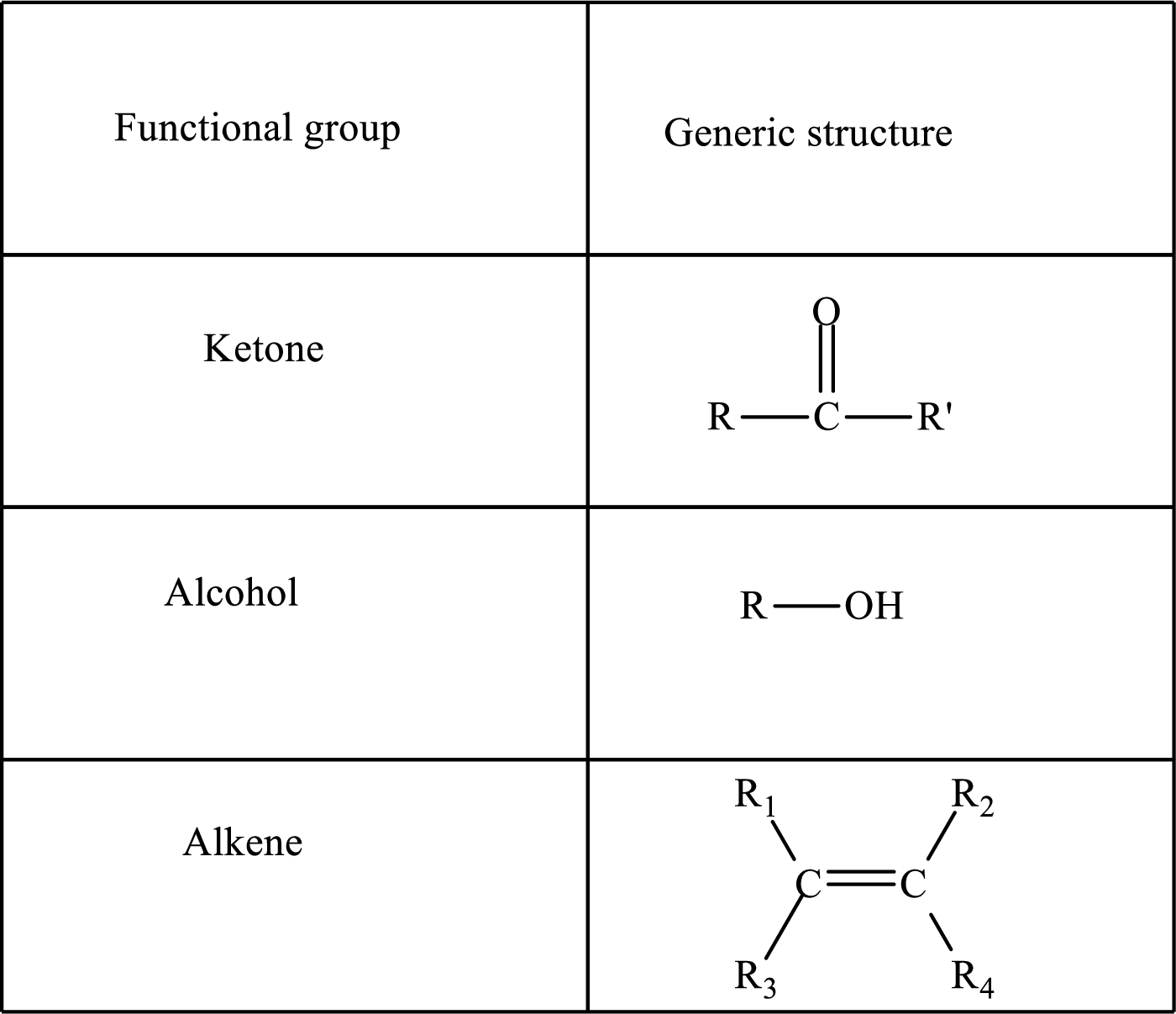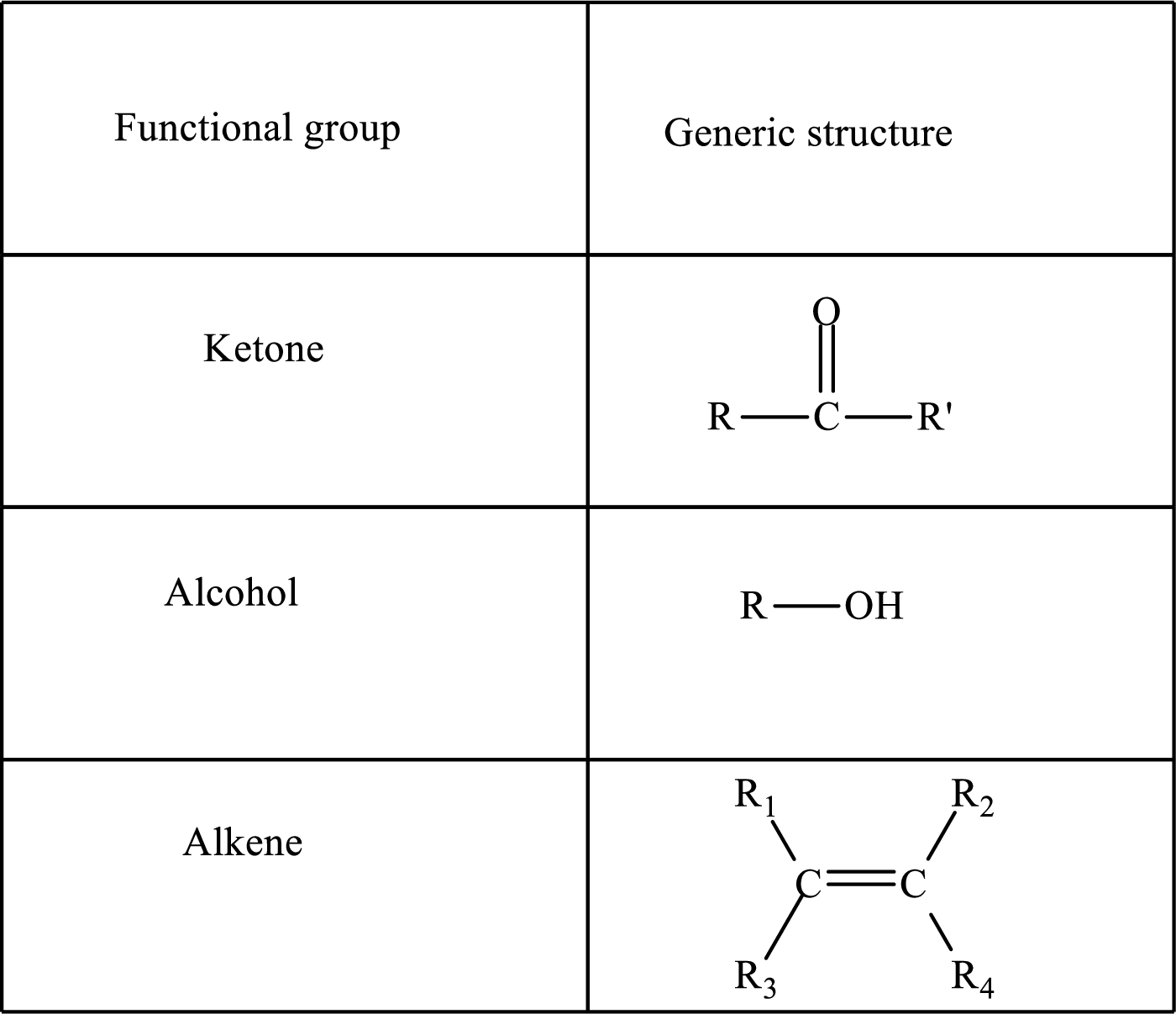
Concept explainers
(a)
Interpretation: To determine the functional group change that occurs in step 1 of a turn of the
Concept introduction: The

Here, R and
Alkanes are saturated hydrocarbons that contain covalently bonded hydrogen and carbon atoms.
(a)
Answer to Problem 25.29EP
In step 1 of a turn of the
Explanation of Solution
The reaction in step 1 of a turn of the

Therefore,

Carbon atoms are bonded with other carbon atoms by a single covalent bond in
(b)
Interpretation: To determine the functional group change that occurs in step 2 of a turn of the
Concept introduction: The
Functional groups are defined as the group of atoms which are attached to the carbon backbone of organic compounds. These are generally heteroatoms which are attached to the parent hydrocarbon chain. Some examples of functional groups are as follows:

Here, R and
Alkanes are saturated hydrocarbons that contain covalently bonded hydrogen and carbon atoms. In secondary alcohol, the carbon atom of the hydroxyl group
(b)
Answer to Problem 25.29EP
In step 2 of a turn of the
Explanation of Solution
The reaction in step 2 of a turn of the

Therefore,

A double bond is present in
(c)
Interpretation: To determine the functional group change that occurs in step 3 of a turn of the
Concept introduction: The
Functional groups are defined as the group of atoms which are attached to the carbon backbone of organic compounds. These are generally heteroatoms which are attached to the parent hydrocarbon chain. Some examples of functional groups are as follows:

Here, R and
Alkanes are saturated hydrocarbons that contain covalently bonded hydrogen and carbon atoms. In secondary alcohol, the carbon atom of the hydroxyl group
(c)
Answer to Problem 25.29EP
In step 3 of a turn of the
Explanation of Solution
The reaction in step 3 of a turn of the

Therefore,

In
Want to see more full solutions like this?
Chapter 25 Solutions
EBK GENERAL, ORGANIC, AND BIOLOGICAL CH
- 17. In the urea cycle, ions are converted to urea. a. рpyruvate b. sodium C. ammonium O d. glutamatearrow_forward17. In the urea cycle, ions are converted to urea. Da. pynuvate Ob. sodium Oc, ammonium Od. glutamate 18. Amino acids that are degraded into are termed ketogenic. Oa. a-ketoglutarate b. oxaloacetate Oc. fumarate Od. acetyl CoA 19. When 100 mg of a substance are required daily by the body, the substance would be classified as a a. micronutrient Ob. macronutrient C. nonessential nutrient d. more than one choice is correct 20. What role do most of the water-soluble vitamins have in the body? ca. catalysis b. hormone precursors Oc. components of cell membranes d. coenzymesarrow_forward1.) Expenditure of energy that is dependent on body weight, sex, age due to a. basal metabolic rate b. environmental temperature c. physical activity d. thermogenic effect 2.) It is associated with food consumption a. thermogenic effect b. basal metabolic rate c. Physical activity d. environmental temperature 3.) It's our daily energy expenditure a. basal metabolic rate b. environmental temperature c. thermogenic effect d. physical activityarrow_forward
- Which best describes the role of enzymes in a chemical reaction? A. They lower the activation energy in the reaction. B. They prevent the reaction from occurring. C. They are produced by the reaction. D. They are consumed by the reaction.arrow_forward17. The most common reaction occurring in the digestion of food is a. hydrolysis b. anabolism c. respiration d. elimination e. hydrogenationarrow_forward2. These are known as metabolic reactions in which large biochemical molecules are broken down to smaller ones A. Anabolic reaction B. Catabolic reaction C. Metabolic reaction D. All of the above E. None of the abovearrow_forward
- Which enzyme is involved in the conversion of phosphoenolpyruvate to pyruvate? a. enolase b. ketolase c. pyruvate kinase d. pyruvate oxidasearrow_forward***In determining glucose concentration using a glucometer, the test involves an enzymatic reaction. What is the enzyme which catalyzes the conversion of glucose to gluconolactone? a. Glucose oxidase b. Glucose reductase c. Glucose synthetase d. Glucose peroxidasearrow_forwardThe net result of the oxidation of one mole of an 18-carbon fatty acid will be a. 136 moles of ATP b. 166 moles of ATP c. 126 moles of ATP d. 146 moles of ATP e. 156 moles of ATParrow_forward
- Meat is refrigerated to prevent spoilage by bacteria because the cold A. denatures bacterial enzymes B. inactivates, but does not denature, bacterial enzymes C. decreases the turnover number of bacterial enzymes D. makes meat proteins more resistant to bacterial enzyme activityarrow_forwardThe carbon dioxide you breathe out comes from A. glycolysis. B. the electron-transport chain. C. anaerobic respiration. D. the food you eat.arrow_forward20. What role do most of the water-soluble vitamins have in the body? O a. catalysis b. hormone precursors C. components of cell membranes od. coenzymesarrow_forward
 Chemistry for Today: General, Organic, and Bioche...ChemistryISBN:9781305960060Author:Spencer L. Seager, Michael R. Slabaugh, Maren S. HansenPublisher:Cengage Learning
Chemistry for Today: General, Organic, and Bioche...ChemistryISBN:9781305960060Author:Spencer L. Seager, Michael R. Slabaugh, Maren S. HansenPublisher:Cengage Learning Chemistry In FocusChemistryISBN:9781305084476Author:Tro, Nivaldo J., Neu, Don.Publisher:Cengage Learning
Chemistry In FocusChemistryISBN:9781305084476Author:Tro, Nivaldo J., Neu, Don.Publisher:Cengage Learning

